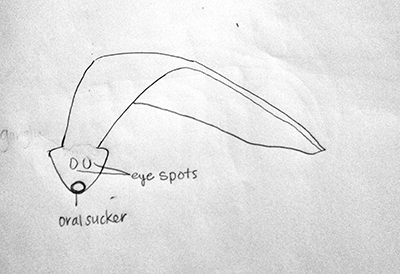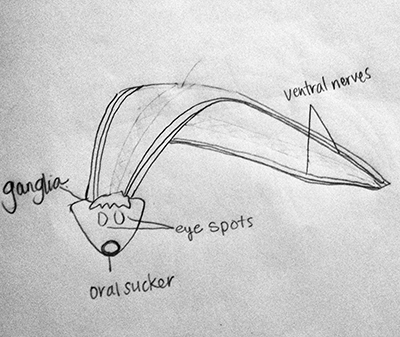Phylum Platyhelminthes includes very simple worms called flatworms. These flatworms are mostly parasites that can infect many animals. Flatworms have a much simpler body make up than Annelids in that they are so thin that they have no need for respiratory or circulatory systems. All of their cells get the nutrients and gases they need because of their proximity to the outer surface and digestive tract. Click through the activity below to learn how to draw a flatworm.
Eye Spots and Oral Sucker
First, draw the outline of the flatworm in such a way to reveal the thin body. Flatworms have simple sense organs on the anterior end of their bodies called eye spots, which are sensitive to light and touch. Draw these simple structures on the anterior end of the body along with the oral sucker. What use does the oral sucker play in the flatworm's life? Think of the answer, then click Show Me to see if you are correct.
The oral sucker allows the flatworm to attach to the intestine of its host. Nervous System
Second, draw the simple brain known as the ganglia on the anterior end of the worm. The ganglia connects to two nerve cords, the ventral nerves, which stretch the length of the worm's body on both the right and left sides. Label the ganglia and ventral nerves. Digestive tract
Finally, draw the digestive tract, starting from the oral sucker all the way down the length of the body, ending with the anus on the posterior end. Label the digestive tract and anus. |




